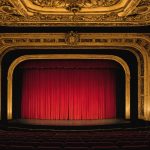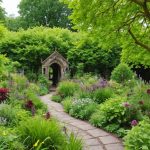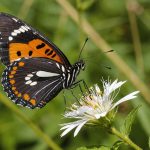Understanding Wildlife Photography in the Scottish Highlands
Wildlife photography basics in the Scottish Highlands require a keen understanding of animal behavior. Capturing striking images relies on the ability to anticipate movements and interactions, which enhances photo quality. Much of the wildlife here, like red deer or golden eagles, often move unpredictably, making this knowledge invaluable.
The Scottish Highlands are home to diverse and often elusive species. Understanding these animals’ habitats and behavior is crucial for successful wildlife photography. Notable animals include the Scottish wildcat and numerous marine birds, each presenting unique photographic opportunities and challenges.
Topic to read : The ultimate family adventure at the british museum: essential tips for an unforgettable experience with kids
Photographers will encounter distinct challenges in this rugged environment, such as unpredictable weather and difficult terrain. The landscape can change quickly, affecting visibility and accessibility. A flexible approach and patience are vital, as conditions often demand rapid adjustments.
The Highland environment’s unique challenges should not deter photographers; instead, they offer a chance to enhance skills and creativity. By mastering these basics of wildlife photography, enthusiasts can create impactful compositions that capture the essence of the Highlands and its inhabitants. Embracing both the opportunities and the adversities of the region can lead to exceptional wildlife photographs.
This might interest you : Achieve visa application success with our expert review services
Essential Equipment for Wildlife Photography
When embarking on a wildlife photography journey in the Scottish Highlands, choosing the right photography gear is crucial. Cameras and lenses designed for versatility in varying conditions enhance your ability to capture high-quality images. A camera with a fast shutter speed and good ISO performance is essential for freezing motion, particularly in low light.
Selecting lenses with an appropriate focal length is equally important. Telephoto lenses, such as a 300mm or 400mm, are ideal for capturing detailed shots of distant animals without disturbing them. A good lens allows you to maintain distance, minimizing your impact on wildlife behavior.
Stabilization techniques also play a significant role in wildlife photography. Using a tripod or monopod can drastically reduce camera shake, ensuring sharper images. Furthermore, accessories like remote shutter releases contribute to stabilization, allowing you to capture precise shots with minimal movement.
Different wildlife photography scenarios require varied camera settings and gear. For instance, photographing birds in flight necessitates quick autofocus and rapid frame rates, whereas capturing serene landscapes with wildlife integrates wide-angle lenses. Each setup demands its specific set of tools and skills. By equipping yourself with the right gear and mastering stabilization techniques, you’ll be well-prepared to capture the Scottish Highlands’ stunning wildlife.
Optimal Timing and Lighting Techniques
Timing and lighting are crucial factors in capturing breathtaking wildlife photos. Golden hour photography, the period shortly after sunrise or before sunset, is highly valued for its soft, warm lighting which enhances the visual appeal of wildlife images. This time of day provides optimal conditions for both portrait and action shots, reducing harsh shadows and creating a naturally beautiful backdrop.
Identifying the best times to shoot involves understanding when local wildlife is most active. For instance, dawn and dusk are often peak activity times for many species, including the majestic red deer and elusive golden eagles in the Scottish Highlands. Being aware of these patterns increases the likelihood of encountering and photographing animals in their natural habitats.
Adapting lighting for wildlife involves adjusting camera settings such as ISO, aperture, and shutter speed to match the changing light conditions. A high ISO can help in low-light environments, while a wide aperture allows more light to reach the sensor, creating a shallow depth of field that isolates the subject against the background. Mastering these techniques enables photographers to capture the ethereal beauty of the Scottish Highlands, regardless of lighting challenges.
Location Scouting and Composition Strategies
Locating the ideal spots for wildlife photography is paramount in the Scottish Highlands. Iconic Scottish wildlife hotspots, such as the Cairngorms and the Isle of Skye, provide unmatched opportunities to capture animals like the red deer and puffins amidst stunning landscapes. Knowing these locations enhances your chances of documenting diverse wildlife and dynamic scenes.
Composition techniques play a critical role in creating compelling wildlife photos. Utilizing the natural environment—be it dramatic mountain backdrops or misty lochs—can elevate your images. Consider positioning your subject off-center using the rule of thirds, which adds visual interest and balance, guiding the viewer’s eye through the photograph.
Maximizing the role of the background and environment involves using natural elements to frame your subject. Stones, branches, and even light can add depth and context to your shots. It’s crucial to assess each setting, adapting your tactics to the unique landscape of the Highlands.
These strategic insights, combined with the beauty of Scottish wildlife, provide photographers with endless creative avenues. By focusing on optimal location scouting and composition, you will capture evocative images that resonate with the wild essence of the Highlands.
Insights on Animal Behavior and Interaction
Understanding wildlife behavior enhances the quality of your photographs by allowing you to anticipate actions—a crucial skill for capturing spontaneous and dynamic moments. Recognising typical animal patterns, like feeding or migration, helps predict their interactions, greatly improving your chances of precise and engaging shots. For instance, knowing when red deer congregate during rutting season or observing puffins in groups can lead to more impactful photos.
Engaging in ethical wildlife photography is of utmost importance. Respect for animals and their environment must come first; this means maintaining a safe distance to prevent causing stress or altering their behavior. Minimising disturbances by avoiding sudden movements or loud noises ensures that wildlife acts naturally—a principle underscored by leading wildlife organisations.
Consider employing strategies that reduce your footprint in natural habitats. These include using camouflage gear or shooting from a hide, which not only conceals your presence but also offers closer views without intruding. This approach respects animals while providing photographers with authentic images, preserving the integrity of their subjects. By practicing these considerate techniques, photographers safeguard the delicate ecosystems they aim to document, fostering a sustainable environment for future wildlife photography.
Post-Processing Techniques for Wildlife Photography
Enhancements through photo editing can significantly elevate your wildlife photography. Using software like Adobe Lightroom or Photoshop, photographers can make tweaks to improve exposure, color, and detail in their images. Adjusting these elements can transform a good photo into a compelling masterpiece. Remember, subtlety is key to keeping your images looking natural.
Focusing on enhancing wildlife photos can involve fine-tuning brightness and contrast to accentuate detail. Colour adjustments can help convey the scene’s mood—warming tones enhance sunrise shots, while cooling tones can bring out the serene essence of twilight. Adding clarity enhances textures, crucial for shots showcasing fur or feathers.
Maintaining natural aesthetics in edits is essential. Over-editing can make photos look less authentic, so aim to keep the wildlife and settings true to life. Use tools like the gradient filter or local adjustments to finesse specific image areas without impacting the entire scene. This approach helps focus the viewer’s eye on the subject while preserving the photograph’s realistic quality.
By mastering post-processing techniques, you can ensure your images authentically reflect the vibrant Scottish Highlands wildlife, capturing both the emotion and raw beauty inherent in every encounter with nature.
Personal Anecdotes from Experienced Photographers
The Scottish Highlands are a paradise for passionate wildlife photographers. Many capture memories that shape their craft profoundly. Experienced photographers frequently share tales of wildlife photography experiences, revealing insights into the unpredictable beauty of nature.
One photographer recounts an early morning expedition, seeking the elusive Scottish wildcat. Despite the cold and fog, patience rewarded him with a rare, intimate glimpse, reminding him of nature’s secrets that reveal themselves with perseverance. Such stories from the field highlight key lessons: patience, respect, and readiness for nature’s spontaneity.
Another insight emphasised the importance of adapting quickly. Venturing into the Highlands, a photographer noticed a sudden shift in light, transforming a dull scene into a vibrant spectacle within seconds. This incident underscored the importance of being attuned to nature’s unpredictability, a crucial lesson learned from both mistakes and successes.
These anecdotes inspire novices and experts alike, conveying the integral blend of challenge and wonder in wildlife photography. The inspirations drawn from nature motivate photographers to pursue their passion with renewed vigour. In every tale, the Highlands’ sheer beauty and complexity stand testament to the power of perseverance and adaptability in capturing timeless wildlife images.











